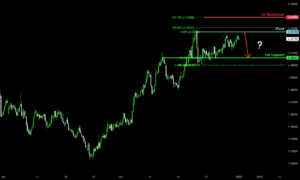Unemployment in the eurozone has risen slightly from record lows in September, indicating that the labor market is starting to loosen. This comes as higher European Central Bank interest rates put pressure on the economy.
According to seasonally adjusted data from European Union statistics agency Eurostat, the jobless rate in the eurozone was 6.5% in September, in line with economist expectations. However, this figure is higher than the 6.4% recorded in August, which matched its record low. The rate has been steadily declining since September 2020, when it stood at 8.6% during the Covid-19 pandemic. In September 2022, the rate was 6.7%.
Eurostat reported that unemployment increased by 69,000 people compared to August, reaching a total of 11.017 million individuals. Youth unemployment also saw a slight uptick, rising from 14.1% in August to 14.2% in September.
This data could provide some relief for policy makers at the European Central Bank, as a cooling labor market suggests that inflation will continue to ease. Lower unemployment rates can drive up inflationary pressures through higher wages. However, if the central bank has tightened its monetary policy too much, the unemployment rate could accelerate as the economy slows down.
The euro-area’s economy unexpectedly contracted by 0.1% in the third quarter due to low private consumption and a decline in global demand.
In its most recent meeting, the Frankfurt-based central bank decided to hold interest rates steady after 10 consecutive rate increases. Many economists believe that the ECB has reached a peak in its current hiking cycle.
Among the larger eurozone nations, France and Germany maintained steady unemployment rates of 7.3% and 3.0% respectively in September. Meanwhile, Italy and Spain experienced slight increases of 0.1 percentage points, with rates reaching 7.4% and 12.0% respectively. In comparison, the US unemployment rate for September was 3.8%.

